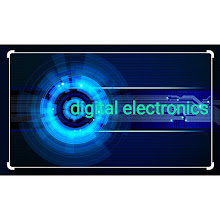- Boolean Algebra and Logic Gates :
1. Properties of Boolean algebra
2. Representation of Boolean
Functions
3. Canonical and Standard Form
4. Functional Completeness
5. Logic Gates
- Gate Level Minimization :
1. K-Map(Karnaugh Map)
2. Implicants in K-Map
3. 5 variable K-Map
4. Variable entrant map (VEM)
5. Minimization of Boolean
Functions
6. Consensus theorem
1. Half-Adder
2. Half-Subtractor
3. Half-Adder and Half-Subtractor
using NAND NOR Gates
4. Full-Adder
5. N-Bit Parallel Adder
5. Half Subtractors
5. Full Subtractors
6. Code Converters - BCD(8421)
to/from Excess-3
7. Code Converters - Binary to/from
Gray Code
8. Code Converters - BCD to 7 Segment Decoder
9. Parallel Adder & Parallel Subtractor
10. Carry Look-Ahead Adder
11. Magnitude Comparator
12. BCD Adder
13. Encoders and Decoders
14. Encoder
15. Binary Decoder
16. Combinational circuits using
Decoder
17. Multiplexers
18. Static Hazards
- Flip-Flops and Sequential Circuits :
1. Latches
2. One bit memory cell
3. Flip-Flops(Types and
Conversions)
4. Master Slave JK Flip Flop
5. Introduction of Sequential
Circuits
6. Synchronous Sequential Circuits
7. Asynchronous Sequential Circuits
8. Difference between combinational
and sequential circuit
9. RTL (Register Transfer Level)
design vs Sequential logic design
10. Difference between Synchronous
and Asynchronous Sequential Circuits
- Memory and Programmable Logic :
1. Read-Only Memory (ROM) |
Classification and Programming
2. Programmable Logic Array
3. Programming Array Logic
4. RAM vs ROM
5. Operational Amplifier (op-amp)
- Register and Counters:
1. Counters
2. Design counter for given
sequence
3. n-bit Johnson Counter
4. Amortized analysis for increment
in counter
5. Ripple Counter
6. Digital Logic
| Ring Counter
7. Shift Registers
8. Design 101 sequence detector
9. Universal Shift Register
10. RTL (Register Transfer Level)
design vs Sequential logic design
11. Verilog Data Types
- Data Communication :
1. Block Coding
2. Difference between Unipolar,
Polar and Bipolar Line Coding
3. Difference between Broadband and
Baseband Transmission
4. Transmission Impairment
5. What is Scrambling?
6. Analog to Analog Conversion
(Modulation)
7. Analog to digital conversion 8.
Digital to Analog Conversion
9. Difference Between Digital And Analog
System












It is really great info and good blog Pigeon Net For Balcony In Hyderabad
ReplyDeleteAmazing post and it's very informative for us Thanks for sharing and if you are looking for graphtec data loggers check here
ReplyDeletehttps://technicalproducts.in/